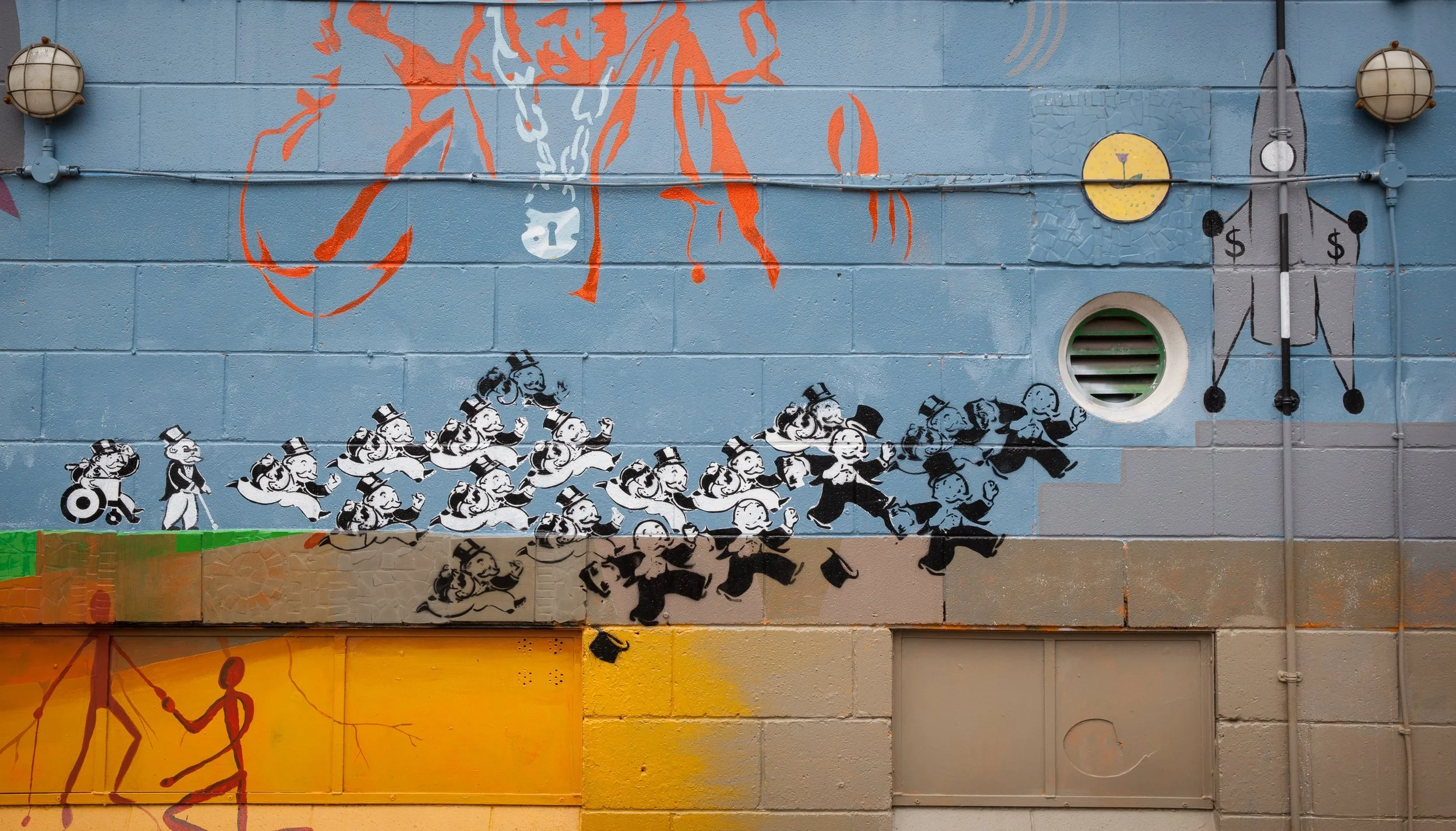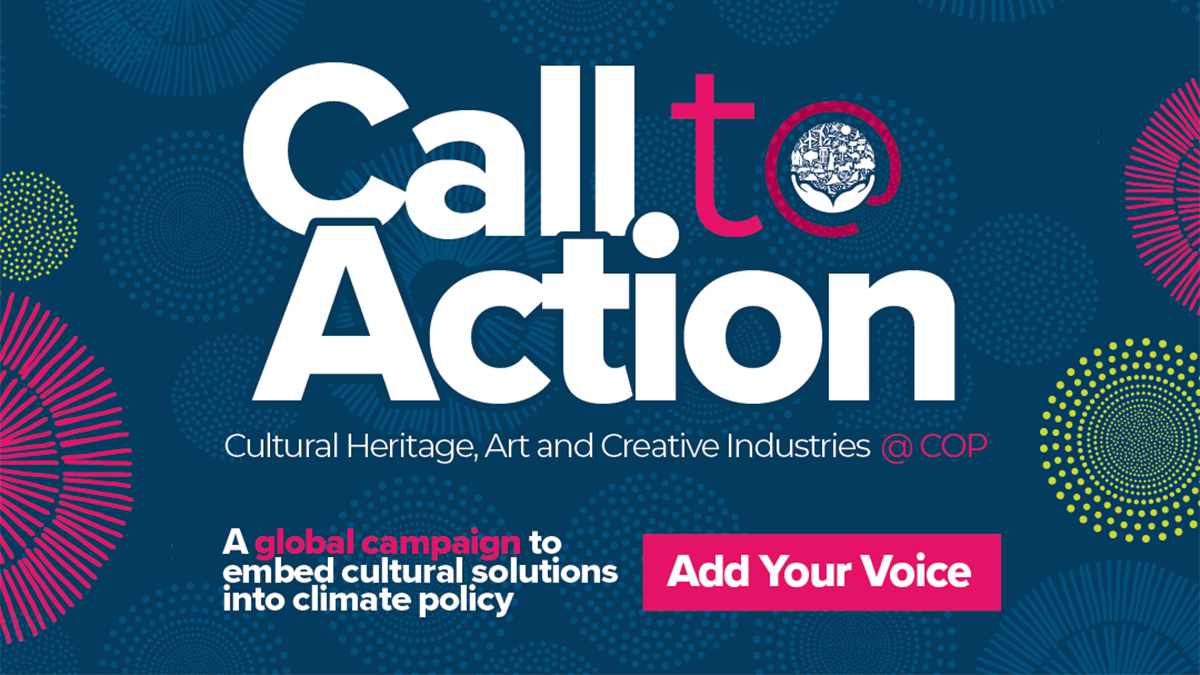ARTICLES
At Paint the Change, we are dedicated to raising awareness and fostering dialogue around the role of public art in promoting social justice. As part of this mission, we've launched a series of articles highlighting street art from around the world, exploring the artists and communities behind it, and examining its broader societal impact.
Who are ANFASEP? Learning from their fight for memory
During Peru’s internal conflict (1980s-2000s), over 10,000 Ayacuchanos were ‘disappeared.’ 41 years later, ANFASEP, an organization led by mothers and family members of the disappeared, is still fighting for justice and ensuring that their loved one’s memories live on. In a still-divided country, their work is critical to make sure the horrors of the past are never repeated. Through art, crafts, song and dance, ANFASEP finds new ways to make the history of the conflict resonate in the present for a more unified Peruvian society. I was fortunate to sit down with the leaders of ANFASEP and learn more about how they use art as a therapeutic and educational tool in their fight for restitution from the central government and to preserve memory.
Finding Spaces to be Still: Promoting Mindful Museums with Louise Thompson
Having spent 12 years as Health and Wellbeing Manager at Manchester Art Gallery, Louise Thompson is ushering in a new era of mindfulness in museums to teach visitors how to be in the present moment. Using a mindfulness-based approach and trauma-informed practices, her work pushes galleries to foster more meaningful engagement with art and encourage visitors to have healthier relationships with themselves. We recently had the chance to chat with Louise and visit Manchester Art Gallery’s Room to Breathe, a product of her efforts that encourages visitors to sit, relax and just be with a painting.
Creating Confusion and Beaching Whales with Captain Boomer Collective
Captain Boomer Collective is an Antwerp-based group that began under Artistic Director Bart Van Peel in 2009. They recently wrapped up their latest installation of “Whale,” in Baku, Azerbaijan, for this year’s United Nations Climate Change Conference, or COP. A piece of street theatre bringing a hyper-realistic statue of a beached whale to different locations, Captain Boomer hires local actors to act as scientists investigating this phenomenon. Complete with a rotting fish smell, “Whale” disturbs and challenges audiences to question our extractive relationships with nature.
From Margins to Murals: How Disabled Communities Are Shaping Climate Action
Disabled people make up 16% of the global population, and their experiences navigating a world that often overlooks their needs offer valuable insights for tackling climate change. In this article, we highlight the work of Dr. Rebecca Yeo and the "Sensing Climate" project, which places disabled communities at the heart of climate action. Through art and research, they are transforming public spaces and driving efforts to create more inclusive and sustainable cities, starting with a powerful mural in Bristol and expanding to Glasgow and Dublin.
Connections, Communities, and Co-Production with City of Sanctuary
I recently had the chance to chat with Ashley Beckett, the London Coordinator and Arts and Libraries Lead for City of Sanctuary UK. City of Sanctuary works across the UK and Northern Ireland to build an ever-growing network of support for migrants, refugees, and all people seeking sanctuary. By engaging institutions and communities across every sector of society, ranging from libraries, schools, sports, theatres, etc, they promote a cultural shift towards inclusivity. City of Sanctuary gives arts organisations and other institutions awards which are highly desired, as being recognized as an official place of welcome goes a long way towards legitimising continued work with migrants.
Continued Education Through Museums: Alexander’s Drive to Learn
Alexander has Asperger’s, which is a form of autism. After college, his desire to continue learning and love of history inspired him to become a museum volunteer—making him the only disabled volunteer at Fulham Palace, the Victoria and Albert (V&A) and the British Museum. In this role, he leads tours, works at desks as a resource for the public and conducts artifact research. He’s even written a book about his experiences (the first of a planned trilogy), which can be found here. He also regularly shares his stories and history on his blog and YouTube channel. In this way, he brings the contents of these different museums to others who may not be able to access them.
A Cultural Shift in Climate Policy: The Global Call’s Mission at COP29
The 29th United Nations Climate Change Conference, or COP29, will take place from 11-22 November in Baku, Azerbaijan,With around 50,000 delegates. This year, advocacy groups are coming out in force to encourage meaningful climate action. One such group is the Climate Heritage Network, or CHN. They have initiated a coalition-based campaign that sees leading NGOs in the cultural sector collaborate with over 30 countries and intergovernmental organizations to push for a Global Call to put Culture at the Heart of Climate Action.
Public Art and Community Co-Creation: Revitalizing Cultural Heritage with the Kassena Community
Based in the Tiébélé village of Burkina Faso in West Africa, the Kassena community is famous for their painted houses tradition. By decorating their houses with culturally-rich symbols, stories, a sense of protection and generations of heritage are kept alive and passed on. And since Tiébélé was recently named one of Burkina Faso’s four UNESCO World Heritage Sites, the Kassena hope to use this distinction to raise public cultural awareness, strengthen preservation efforts, and benefit their community through projects and economic activities centered around their heritage.
How WOM Collective Blends Nature, Community, and Female Empowerment
Founded in 2019 by ELNO, Lours, Carleen De Sözer, and Raquel Natalicchio, WOM Collective aims to inspire fellow women in public arts. Street art especially is a male-dominated field. The nature of street art means that artists typically go out to create by themselves, at night, in public spaces. For obvious reasons, women may not feel safe doing this. This creates significant barriers to women’s participation in street art. WOM Collective makes this world more welcoming to female artists by building spaces for creative women to come together.
Celebrating African Artists for Black History Month and Beyond
October marks the UK’s celebration of Black History Month. While Paint the Change is a London-based organization, we work around the world to link our projects in global solidarity with others. We strongly believe that highlighting voices from the global majority is critical to celebrating our differences and creating greater understanding. This month, we’d like to highlight African artists using their talents to speak about social issues. These artists explore different questions and challenges through their work, imagining new possibilities.
Communities as Co-Creators: Telling Stories with Alexandre Keto
Alexandre Keto, a Brazilian street artist, collaborated with Paint the Change on the #EducationIsNotACrime campaign, highlighting the Baha’i minority's exclusion from higher education in Iran. His mural, Mother With Children, is on display in New York. We caught up with Keto to learn more about his recent work which focuses on community-centered art. For his latest project, ‘Obra de Arte,’ he works in Brazilian favelas to create ‘art with a purpose.’ Through this, he tells local stories through art and ensures it is also functionally useful.
The Artivist Network: Bridging the Gap Between Art and Advocacy
Daniel Rupazow is part of The Artivist Network, a collective of arts activists and facilitators putting creativity into advocates' toolboxes. Their focus on art supporting climate justice helps the environmental movement reach new communities. We spoke with Daniel during an especially busy season— The Artivist Network is planning actions for COP 29 in Azerbaijan and has just released a Tactics Manual on advocacy around toxic bonds.
Frogs, Transformation, and Social Justice: Apolo Torres’ Art for Change
Apolo Torres (@apolotorres) is a Brazilian street artist who worked with Paint the Change in 2016, on the #EducationIsNotACrime project, which raised awareness of the denial of education to the Baha’i religious minority in Iran. His mural depicting a young girl reaching for knowledge still stands in São Paolo. Since then, his career has reached new heights, with his work bringing attention to social justice issues in Brazil and around the world. We caught up with him to chat about his current projects, areas of interest, and experiences as someone working in public art.
The Latinx Roots of Public Art
Hispanic Heritage Month takes place from September 15–October 15 and is celebrated in many countries around the world, including the U.S. and the U.K. According to the 2021 Census, over a quarter of a million Latinos live in the UK, comprising the eighth biggest ethnic group born outside of the UK in London. Despite this, there is not even a box to describe Latinidad on its demographic forms. As an international Latina student, I have scrolled and scrolled through the available options to find something that describes me, only to resign myself to selecting the anonymity of “other ethnic group.”














